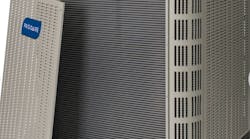I grew up in the auto parts business. Back in the early '60s — when I was a kid — going to the parts counter was an experience that changed you forever. The lighting was bad, the windows were dirty the floor was a graveyard for old cigarettes and a dirty-shirt-wearing fellow named “Rex” greeted you at the counter. Worn-out counter mats and broken car parts covered the counter. Directly behind the counter, a collection of old calendars gathered — each bore a big X over the days now passed by. The artwork on the calendar was offensive to women and not meant for family viewing. I can cut back to that very day in the “summer of '65” when I passed that ritual of manhood — an unescorted trip to the parts counter. You walked in, pulled up a custom duct-tape embossed bar stool and idled away the minutes while Rex took care of the four guys before you. This was just the way life worked in Taylorville, IL. After I graduated from college, a major manufacturer hired me into its training program. During my training, I spent time shadowing a distributor salesman. We started the day off with a five-minute tour of the distributor branch. I walked into the counter, and as Yogi Berra would say, it was déjà vu all over again! The only thing missing was Rex.
Today, HARDI distributors are in the second step of a counter metamorphosis. In the first step, we realized that counters were the face of our business. The lighting got better, the floor was cleaned more often and merchandising appeared in place of the six-month-old pile of returned parts. In upper- quartile distributors, the ladies and gentlemen working the counters have transitioned from warehouse workers who “help out at the counter” to customer service workers who handle customer needs on the phone as well as face-to-face. Transformation was not overnight — this was no magic phenomenon. Some forward-thinking manufacturers have provided merchandising support, solid ideas and moral support for helping through this first stage of the change. Today, counters feature racks of merchandise, popcorn and a few point-of-purchase displays. Today's counter is less like the counters of yore and more like a modern business — but the bar is rising. The Home Depot, Lowe's and scores of other giants of retail have publicly stated they are going after our business. Metamorphosis Step Two will be faster and more furious. The following are seven ideas that will speed your transformation.
- Decide which customers you want to attract
Target a group with whom you can make the most money. According to new research, companies who properly target customers achieve sales goals nearly 50 percent more often. Targeting works for outside sales, and it works for counter sales. Invest time thinking about the people you would like to sell to. Small contractors, service trucks, large mechanical contractors, technicians and commercial installers come to mind. Don't confuse traffic with sales. Large mechanical contractors may send a driver to your counter three times a day, but rarely does he have the ability to make buying decisions. On the other hand, these same contractors may have service trucks with technicians completely authorized to buy whatever they need to finish the job (without concern for price). Think about the target process.
- Decide what products your target group likes to buy
Note I did not say needs to buy; I said likes to buy. To explore this concept, go to a retail store and pay attention to the placement of items near the cash register. At a grocery store, most people experience/expect a short wait at the checkout line. As you stand waiting your turn in line, you naturally look around. Gum, glue, kitchen gizmos and gossip (of the National Enquirer) come into view — most targeted to the lady of the household. Electricians, technicians, service-truck drivers and others have items they like to buy. Decide who you want to target and put the stuff they like to buy front and center.
- Develop a strategy to drive business to your door
“If you build it, they will come.” That may have been true of a baseball diamond carved out of an Iowa cornfield in Field of Dreams, but the concept probably won't work at your counter. Answer the question, why should a customer come to my counter? If you are dealing with busy owner-operator contractors, time is money — can you get them out the door faster than the next guy? Service-truck drivers are looking for repair parts. If you target service drivers, publish and promote a list of repair parts available. Whatever your advantage, promote it. Train your sales force to talk about “our counter's” advantage. If you publish a newsletter, add an article describing the edge your counter provides. And remember, “Come see our new counter” will only work if your counter is 140,000 square feet and carries more parts than The Home Depot. Come try our 15-minute guarantee or come see our new repair part resource display.
- Develop a strategy for winning the “swing vote”
In politics, neither Democratic nor Republican party members determine the winning candidate — instead, it's the “swing vote.” These are the customers who sometimes come to your counter and sometimes go to the competitor down the street. If you are getting 50 percent of their business now, you can drive this to a much higher percentage. A customer loyalty program focused around the busiest times of year can result in major gains. During the first hot week in June, heating and cooling contractors work like crazy getting their customers' ailing A/C systems up and running. A program that rewards purchases with free tools, clothing and fishing supplies can have a major impact on where the trucks stop for supplies each morning.
- Identify the top 25 items and think matrix
To be successful, your prices need to be fair. The big sale down the street at Lowe's or The Home Depot often influences counter item pricing. Without a strategy, this often leads to margin erosion. The small resi-contractor sees thermostats on a huge display with loss-leader pricing. He remembers this price and compares you against those “loss-leader specials.” If you don't train and communicate with your counter staff, they will drop the margin on every item in the category. Matrix pricing teaches us that once you step away from the 25 “shopped items,” your pricing level deserves to be higher and your gross margin larger.
- Differentiate yourself by making your customer's life easier
Forward-thinking distributors have differentiated themselves in busy markets by providing outside-the-box service. A small contractor's mini-take-off room (or resource library) provides a quiet working environment for a contractor to develop (and later purchase) the bill of materials for a pending project. A bank of computers allows busy service-truck drivers to check e-mail and log their time while waiting for parts. And a bank of outdoor lockers with combinations available to regular customers provides a secure way for contractors to pick up parts any time, day or night. None of these are “must- haves” but all act as a differentiator in a crowded market.
- Don't forget the basics
When a customer walks into your counter, they subconsciously compare the experience with every other piece of their life. Merchandising is not just you vs. your competition, but you against the auto parts store, the hardware store and even the local bait shop. Clean is a must. Clutter is a never. Seasonal change is expected. Never sacrifice courtesy and customer service.
In summary
After sharing this information with a number of distributor managers, many have asked me the same question: How can I tell if I have made it through the first metamorphosis? On the previous page is a list of questions designed to guide you. To score your company, you should circle all of the second metamorphosis (2M) answers that match your counter.
Tally your score. If you had more than 10 circled in the second metamorphosis column (2M), you are well on your way to the new age. A score between 7 and 10 means you have put some time into the process. You know what needs completion but may lack one or two items required for long-term success. A score in the 5-7 range indicates the need to assign a specific person (or group) in your organization to growing the counter. If you scored less than 4, I recommend you devote time to rethinking your counter strategy. You may want to spend some time visiting successful counters in other industries (electrical or plumbing distributors, auto parts counters, wholesale foods counters).
Frank Hurtte ([email protected]) is a consultant to distribution, the sales channel and manufacturers' agents at River Heights Consulting. He has 28 years of real-world experience and is available as a speaker and executive coach. He has written a number of articles and white papers on management, distribution and the selling process. Frank has helped a number of businesses and not-for-profit corporations through the strategic planning process. Contact Frank at 563/514-1104 or visit www.riverheightsconsulting.com.





